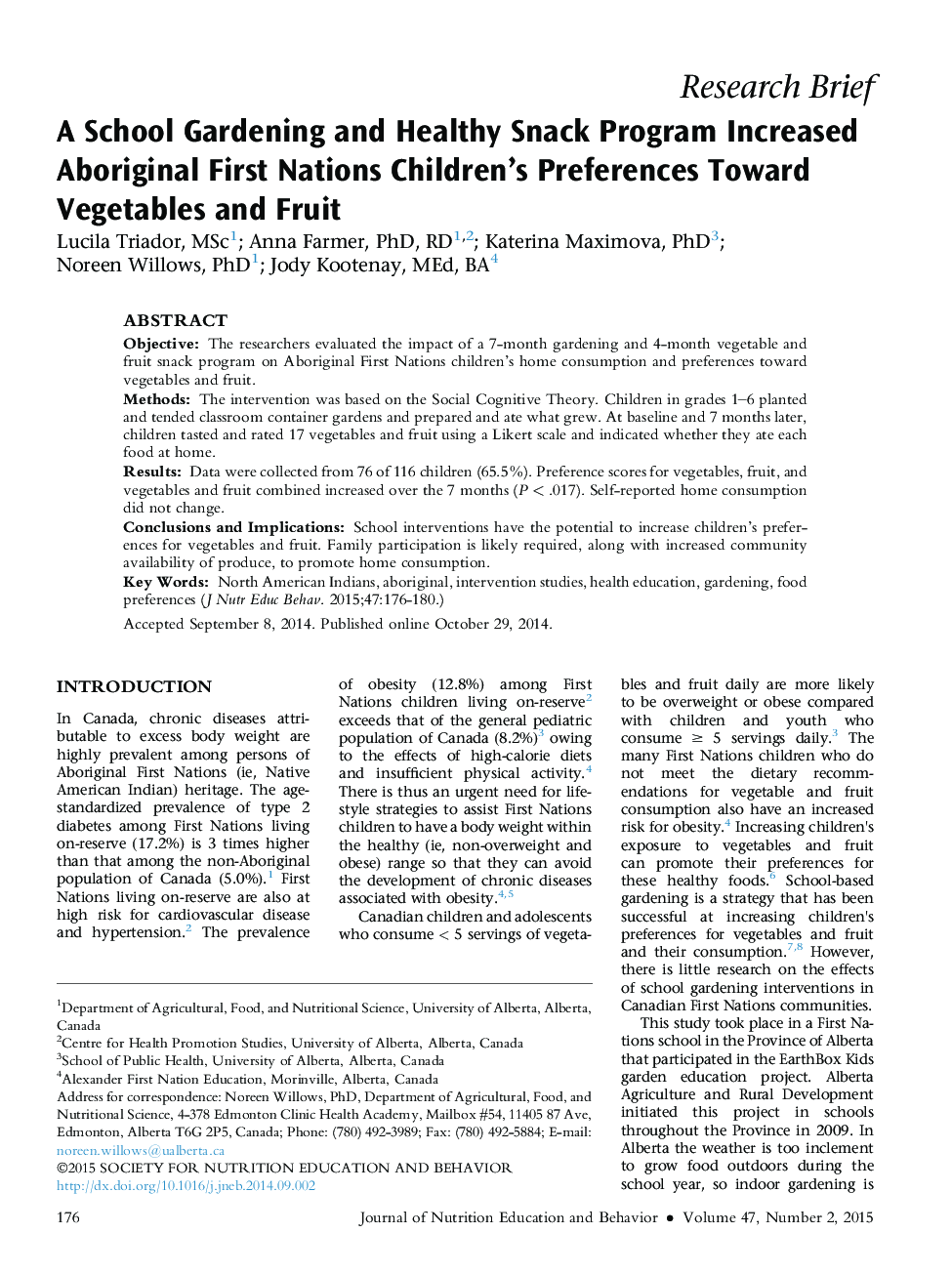| کد مقاله | کد نشریه | سال انتشار | مقاله انگلیسی | نسخه تمام متن |
|---|---|---|---|---|
| 361465 | 620602 | 2015 | 5 صفحه PDF | دانلود رایگان |
ObjectiveThe researchers evaluated the impact of a 7-month gardening and 4-month vegetable and fruit snack program on Aboriginal First Nations children's home consumption and preferences toward vegetables and fruit.MethodsThe intervention was based on the Social Cognitive Theory. Children in grades 1–6 planted and tended classroom container gardens and prepared and ate what grew. At baseline and 7 months later, children tasted and rated 17 vegetables and fruit using a Likert scale and indicated whether they ate each food at home.ResultsData were collected from 76 of 116 children (65.5%). Preference scores for vegetables, fruit, and vegetables and fruit combined increased over the 7 months (P < .017). Self-reported home consumption did not change.Conclusions and ImplicationsSchool interventions have the potential to increase children's preferences for vegetables and fruit. Family participation is likely required, along with increased community availability of produce, to promote home consumption.
Journal: Journal of Nutrition Education and Behavior - Volume 47, Issue 2, March–April 2015, Pages 176–180
